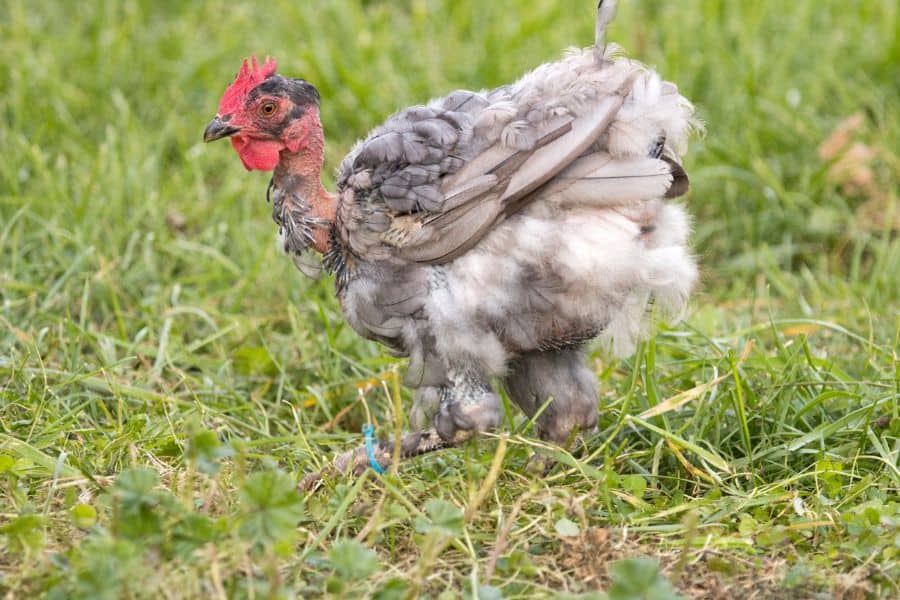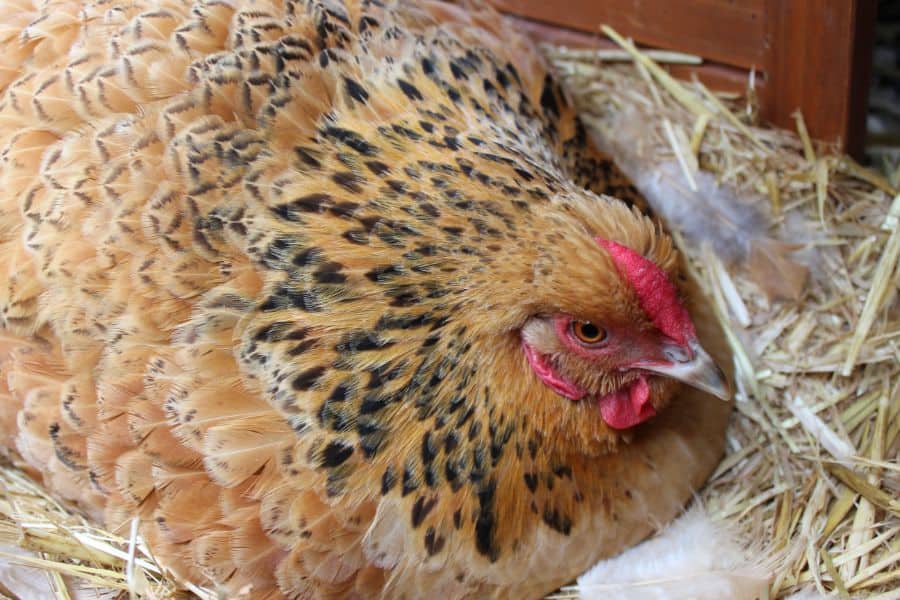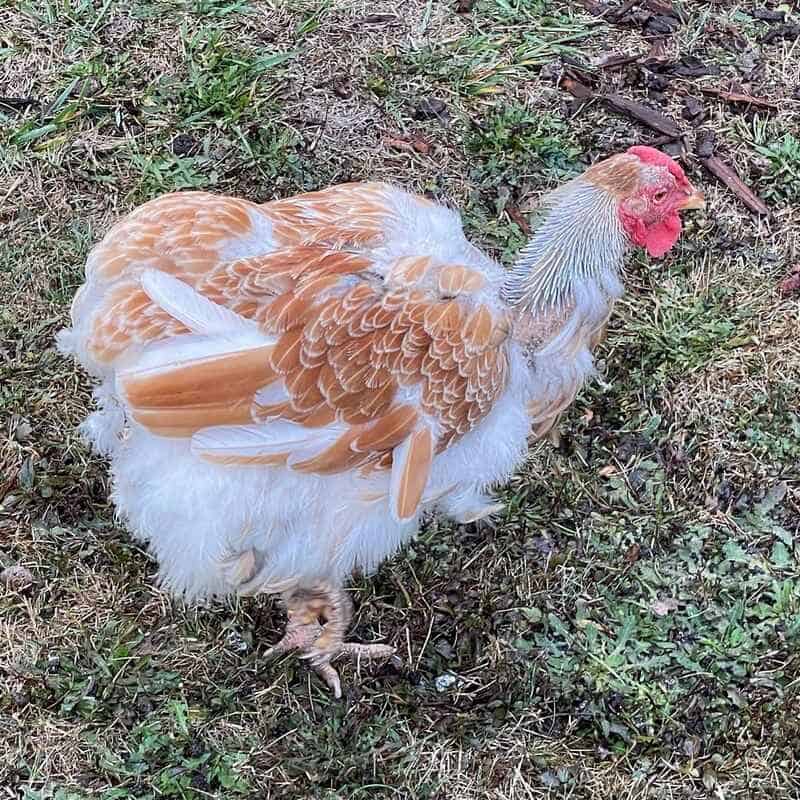Chickens losing feathers is not something uncommon, especially in late summer-autumn (as sunlight exposure falls).
However, if the feather loss appears unusual, it could be a sign of serious health problems, like gut or kidney infections.
Because of this, it’s crucial to understand the potential causes of chickens losing feathers and how to address them.
Luckily, we’ve done the research for you and created this interesting post. So, join us below and learn more about your feathery friends.
Why Are My Chickens Losing Feathers
1. Annual Molt
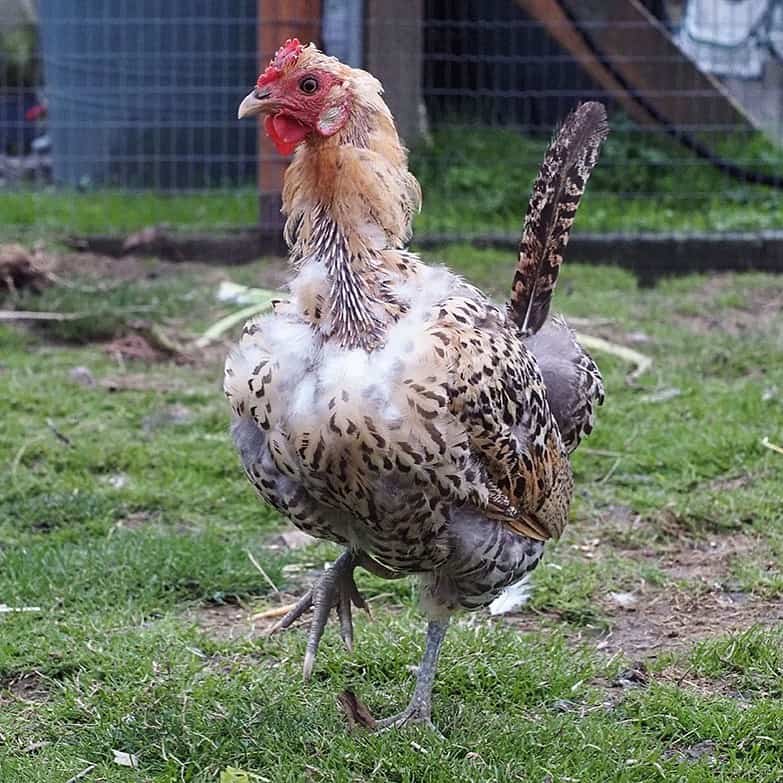
- Affected Areas: Head, neck, back, breast, vent, and wings
An annual molt is an event that occurs around the beginning of autumn. Molting simply refers to chickens shedding their feathers and growing new ones.
Since it’s a natural process, there’s nothing much you can do to prevent it. Plus, it’s not advisable to interfere with the process because you can impair the overall well-being of your chicken.
Normally, chickens go through several molts in their lifetime, the first being the juvenile molt. This occurs when baby chickens are between 6 to 8 days old. During the molt, chicks shed their fluffy feathers and replace them with actual feathers.
At around 7 to 12 weeks, male chicks go through their second juvenile molt. At this point, they grow ornamental feather that helps to differentiate them from females.
However, chickens go through their first adult molt at 15-18 months of age. Usually, this molt happens in late summer or early autumn and lasts around six weeks.
But remember the molting period can vary depending on the breed, diet, and age of your chickens. Some birds can even molt for up to 4 months.
When molting, most chickens shed the feathers on the head and neck area first. But some can lose feathers at random areas of their body, including wings, tail, and back.
Another thing, Chickens can go through types of molts: soft molt and hard molt. Soft molt refers to the gradual loss of feathers and its often difficult to notice.
On the other hand, hard molt means chickens lose all their feathers at the same time. Most times, these birds will appear naked or grow pin-like feathers that can be painful.
Besides feather loss, molting also causes a significant reduction in egg production.
Solutions
- Avoid handling your chicken and keep an eye out for bullying
- Provide them additional protein through treats like sunflower seed, bone meal, and cooked meat
- Isolate any chicken that is undergoing a hard molt to prevent pecking injuries from the rest of the flock
- Offer the bird enough space to rest and relax and plenty of water to keep her stress levels low
2. Broodiness
- Affected Areas: Chest and belly area
Broody chickens are those birds committed to hatching their chicks. This state is controlled by several factors, like lighting conditions, instinct, and hormones.
It also forces the hen to display aggressive tendencies and to become grumpy all the time, especially when approached.
So, how does broodiness relate to feather loss?
Well, a broody hen will sit on its eggs and pluck its breast feathers to line the nest. Both the plucked feathers and the chicken’s bare skin provides the incubating eggs with warmth. Even after the chicks hatch, they can stay toasty warm under their mother’s belly.
Broodiness shouldn’t be a cause of concern because it’s instinctual. Furthermore, the broody hens usually go into a molt after raising their chicks. This means the plucked area will regrow feathers.
However, it is unhealthy for a chicken to brood for a long time. Since hens can’t tell if the eggs are fertilized or not, they could spend a lot of time sitting on them. This is not healthy because broody chickens rarely eat and lose a lot of weight.
In such a case, you should break the habit. Usually, you just take out the clutch before the broodiness sets. Do this during the earlier stages to prevent other hens from also going broody.
Solutions
- Isolate any broody hens from the flock to prevent any pecking injuries
- If the eggs are unfertilized, remove the clutch to stop the broodiness
- If the hen has been brooding for a while or has hatched a new brood, start feeding it the hen chick starter to improve her weight
3. Preening
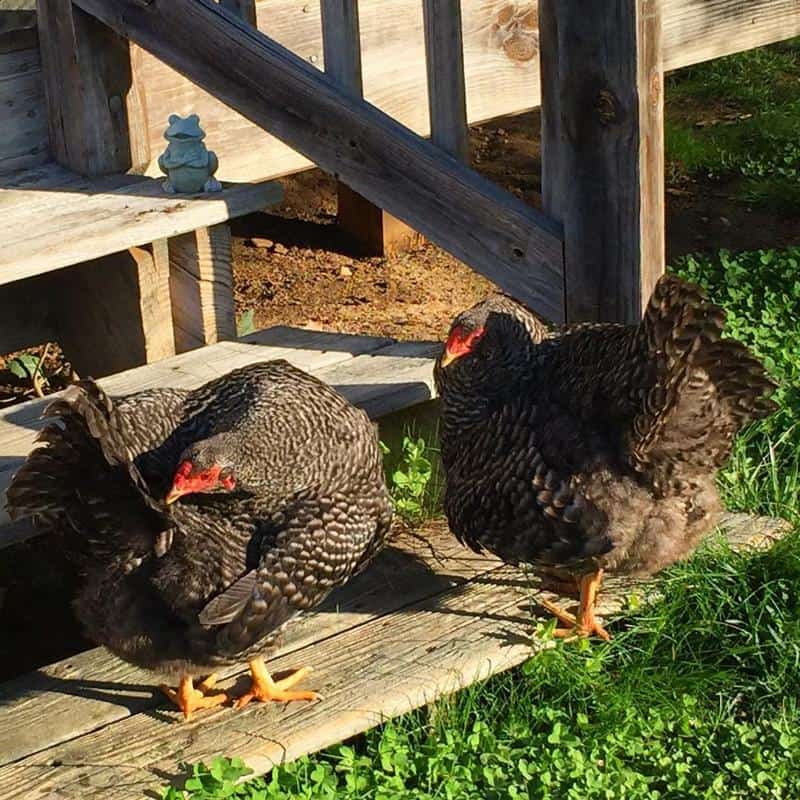
- Affected Areas: Rump and bottom tail feathers
Preening is literally chicken grooming, and it’s a natural cause of feather loss. Basically, your chicken spreads the oil from the preen gland (located near the base of the tail) on their feathers.
The oils help keep their feathers waterproof, healthy, and shiny. It also makes it easier for them to convert Vitamin D into their bodies.
Preening also allows your chickens to examine their bodies for parasites and remove any broken feathers.
However, the process also leads to feather loss because the bird removes broken feathers. The good news is the chickens only shed a few feathers, so you shouldn’t worry.
While chickens will preen on their own, they prefer doing it as a group. So, expect to see some slight changes in your bird’s feathering.
Solutions
- Regularly check your chickens’ plumage
- If the feathers look a little dull, add a vitamin A supplement to their diet to promote oil production
4. Stress
- Affected Areas: Around the neck
Chickens take the phrase ‘pulling all your hair out’ when stressed to a whole new level. When chickens get stressed, they first stop laying eggs, then go through a molt or partial molt.
Stress in chickens can occur due to a variety of reasons, including:
- Fluctuation in coop temperatures
- Overcrowding
- Presence of predators
- Excessive handling
- Bright lights
- Infestations
- Moving coops
Chickens are creatures of habit. Thus, any change, no matter how small, will affect them drastically. For instance, introducing new chickens to the flock or moving the flock to a new house can cause a lot of stress.
Such stressful situations can induce molting and cause loss of feathers around the neck area. These feathers usually get replaced by new pin-like feathers. Chickens can also lose feathers on the neck when they rub on the feeder’s lip.
Solutions
- Avoid overcrowding
- Regulate the coop temperature and dim lights
- Keep a clean and secure coop
- Allow your chicken to free range as much as possible
- Reduce excessive or rough handling
- Provide your chickens with a balanced diet
5. Bullying and Dominance Issues
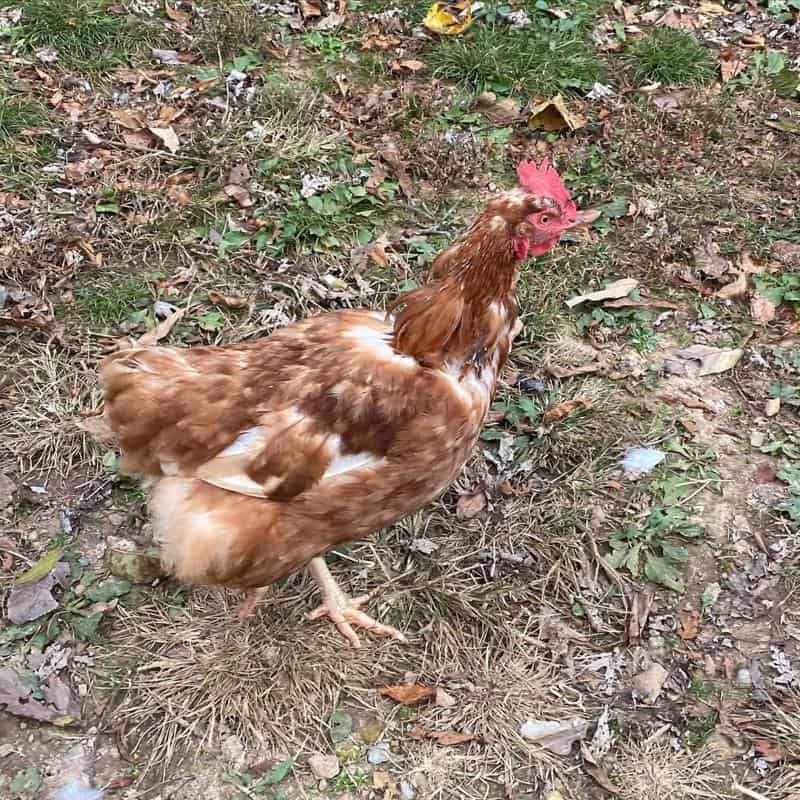
- Affected Areas: Head and neck area
Like most animals, chickens also have a hierarchy order or pecking order. The order starts with the strongest and healthiest being at the top and the smallest and weakest at the bottom.
The pecking order is essential because it determines which chickens eat first and which eat last. It also establishes dominance and pushes away weak chickens so only the strongest members can survive
Sadly, these involve pecking on the weak, which can lead to feather loss around the neck, back, and bottom of the chicken.
Even worse, some chicken breeds have personalities that make them bullies. As such, they will peck on weak or sick chickens, particularly if the coop is overcrowded.
In addition to losing feathers, watch for these signs of bullying in your flock:
- Blood or injury
- Reduced egg production
- Chickens losing weight
- Cowering chickens
So, what causes chicken bullying beside overcrowding?
- Boredom
- Stress
- Broodiness
- Keeping breeds susceptible to bullying
- Sickness or weakness
Solutions
- Isolate any overly aggressive chicken breed
- Isolate injured chicken to prevent further injury
- In severe cases, you could trim beaks and spurs
- Offer hiding spots for bullied chickens
- Create multiple feed and water spots
- Reduce stress in the flock
6. Boredom and Pecking Issues
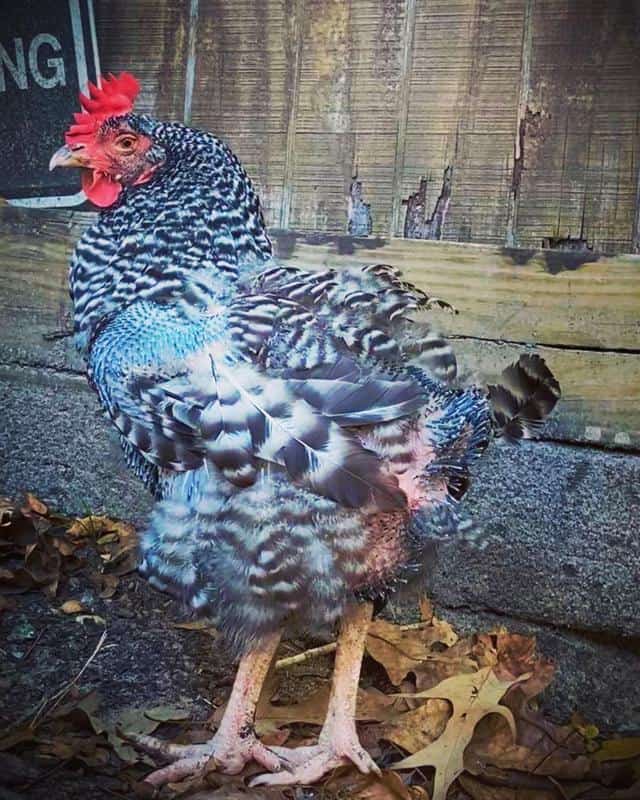
- Affected Areas: Back and vent area
Chickens also struggle with boredom and need to be mentally stimulated to avoid getting into mischief. They will peck others if they’re bored, just to have something to do.
This behavior is common, especially in overcrowded coops and runs. Cramped chickens will peck at their flock mates due to stress and frustration.
Pecking can lead to raw spots on the chicken’s skin so watch out for bald spots on your chicken’s back and vent areas. Keep in mind, bald spots or blood can attract more bullying. Sometimes, the bullying can turn into cannibalism.
Chickens naturally peck for a lot of reasons. Their beaks serve as their hands. That coupled with their curious nature, they’re bound to peck at anything to investigate it or move it aside when foraging.
However, pecking can become an issue. For example, vent pecking is a common problem in a laying flock. Vent pecking is when the birds peck at the vent area of a chicken that just laid an egg.
The vent of a chicken stays red and swollen for a couple of hours after laying an egg. This is a source of curiosity for other chickens who might start pecking at it, causing feather loss.
Solutions
- Avoid overcrowding and cramping.
- Create distractions. A few perches, hanging cabbages, or swings. It will keep your chickens active and less prone to pecking.
- For vent picking, consider darkening your nesting boxes and dimming the lights in your coops. That will prevent the other chickens from noticing potential redness on a chicken vent.
7. Overbreeding
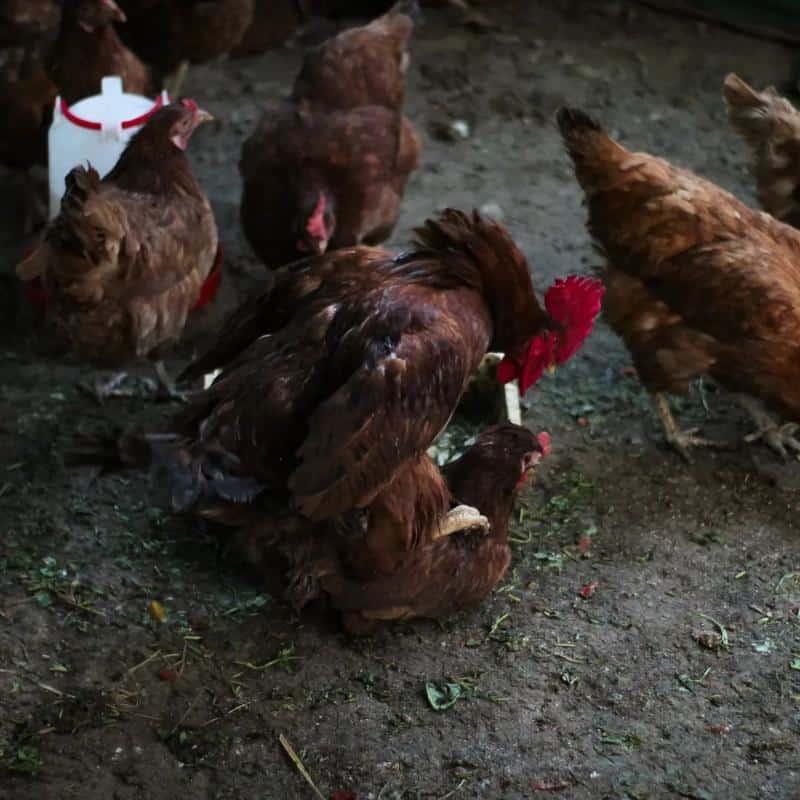
- Affected Areas: Back and nape of hens
Roosters are also a common cause of feather loss among chickens. While mating is a natural part of life, overzealous mating could cause more harm than good to your hens. Overbreeding generally happens when a specific hen is targeted frequently by roosters.
When a rooster mates with a hen, he will cling to the base of her neck with his beak and use his spurs and talons to tread her back and gain stability. The talon can tear into the hen’s skin, causing feather loss and injuries.
During mating season, it’s common to see some bald spots on your hens’ backs and the nape. Naturally, this is no cause for concern. However, it becomes a problem when:
- You have an aggressive rooster
- You have too many roosters compared to the number of hens
- When a rooster or several roosters in your flock target a specific hen
Solutions
- Keep more hens with one rooster.
- If there is a favorite hen in your flock, isolate it during mating season
- Invest in saddles for your hens
- Trim the roosters’ nails and spurs. In severe cases, you could trim the beak.
8. Poor Nutrition
- Affected areas: Random patches on the body
A poor diet can also cause your chickens to lose feathers. This doesn’t necessarily mean that your chickens are starving. It implies you are not meeting their dietary needs.
, they can go through molting and lose feathers.
Protein deficiency is one of the most common nutritional problems that cause feather loss. A chicken’s feather consists of 80 to 85% keratin, which is a structure protein.
So, if your chickens don’t get enough protein, vitamins, and minerals, they might go through molting. This could lead to a decline in egg production and loss of feathers.
Similarly, when chickens lack protein, they might turn to pecking their own or other chickens’ feathers off as a source of proteins. This leads to feather loss, and in extreme cases, cannibalism.
It is important to note that chickens have varying dietary requirements depending on the following factors:
- Stage of life
- Gender
- Access to foraging spaces
- Laying ability
- Activity levels.
Solutions
- Try free ranging as much as possible to encourage foraging
- Ensure your chickens are receiving sufficient amounts of protein, minerals, and vitamins
9. Diseases
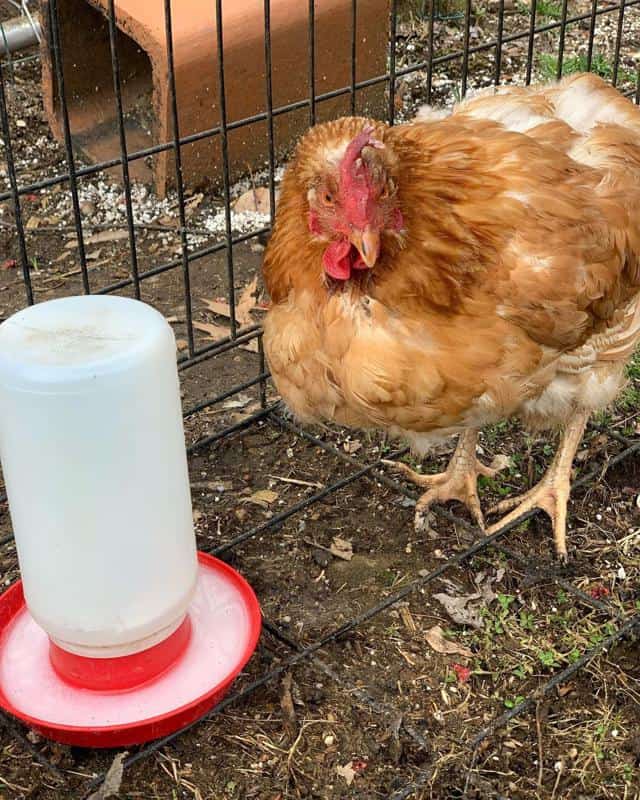
Chickens are vulnerable to several diseases that might cause feather loss. Some of the diseases include:
Vent Gleet
This is a fungal yeast infection caused by bacteria in the digestive tract. It is usually caused by dirty water or moldy food.
If your chickens have this disease, you will notice missing feathers, irritation, and redness around the vent area. The birds would also lose their appetite and suffer from diarrhea and a swollen vent.
Solutions
- Feed your chickens a proper diet
- Balance the poop pH by adding vinegar to their water
- Treat the condition with antibiotics
- Clean the vent and surrounding feathers regularly
Favus (Ringworm)
Birds infected with ringworms usually have small, white, or moldy-looking patches on the comb. In severe cases, the ringworms can extend to the feathered section of the skin.
When this happens, they can form scutula around the base of feather follicles, which causes feather loss.
Solutions
- Isolate any affected chickens and follow proper hygiene measures while handling them
- Expose your chickens to more sunlight
- Apply some betadine on the infection site once a day until it clears
- Cover the infected area with miconazole twice a day
Inflammations in the gut and kidney can also force your chickens to shed their feathers. These conditions increase the production of urates (the white part of chicken poop).
Since urates are extremely acidic, they can stain and soften feathers at the lower abdomen and cause them to fall.
10. Parasites
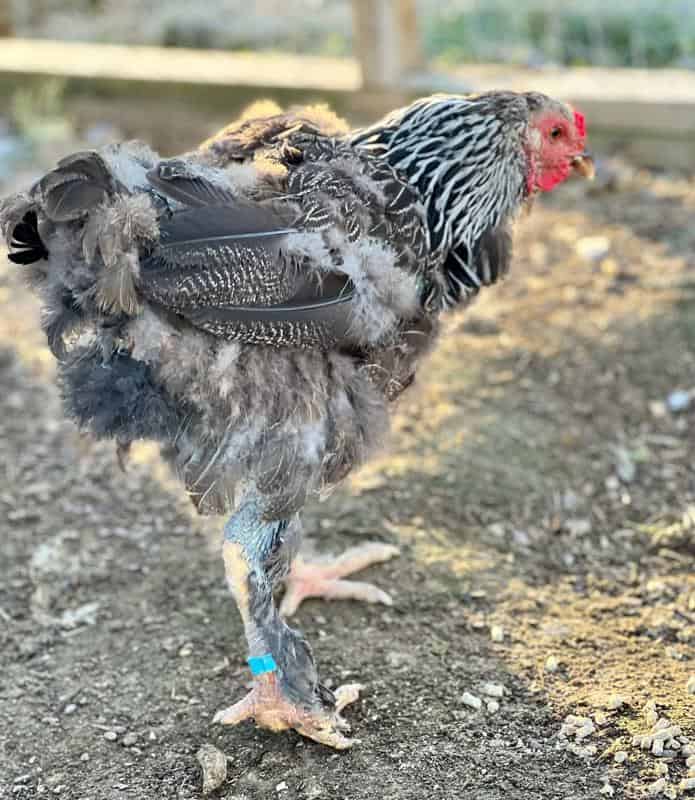
- Affected Areas: tail, breast, and vent
Parasites are a major source of discomfort and feather loss among chickens. They’re also a source of concern for any poultry enthusiast since they’re highly contagious.
The most common chicken parasites include:
Mites: They usually live in the chicken coop and come out at night to suck blood from your birds. Mite infestation can also cause feather loss, usually on the back, because the chicken might preen or pluck her feather to get some sense of relief.
Lice: Like mites, lice infestation causes birds to excessively preen themselves, leading to feather loss.
Solutions
- Regularly check your chickens for lice and mites
- Clean the chicken coop and its surroundings frequently
- Provide regular dust baths in poultry dust to help treat and prevent minor infestations
- Add iron supplements to their diet
- Replace bedding often and maintain proper hygiene while handling the chickens to prevent repeat infestations
How to Help Your Chickens Grow Their Feathers Back
Increase Protein Intake
As mentioned above, feathers are made up of 80-85% beta-keratin. Whether your chickens are experiencing molts or are losing feathers due to other reasons, additional protein in their diet will go a long way.
High-protein diet during molting is critical for feather development. This is because the protein goes into the formation of feathers. That explains why egg production reduces or stops when chickens molt.
When your chickens are laying eggs, you should provide layer feed with up to 16% protein. But if they’re trying to regrow their feathers, switch to feed that contains around 20% protein content.
Another great source of protein is cooked eggs. Just mash up your cooked eggs, shells included, and feed them to your chickens. Alternatively, you can give them high-protein snacks like mealworms, sardines, or oats.
Provide Vitamins, Minerals, and Amino Acids
Amino acids are the building blocks of protein. For chicken, methionine is the amino acid that aids in feather development. Hence, if you’re looking to help your chicken regrow its feathers, pick supplements containing methionine.
Also, try using apple cider vinegar. Apple cider vinegar helps increase calcium absorption within the chicken’s body. Therefore, add a tablespoon for every two liters of water before pouring it into the drinkers.
As for minerals, invest in seaweed meal, as it contains 80+ minerals your chickens need for their feather growth and bone development.
Provide a Safe, Secure, and Clean Environment
Every chicken farmer knows that a minor change in routine or environment might stress the chickens and trigger partial molts. Therefore, it’s crucial to maintain a consistent routine for your birds to avoid this issue.
Additionally, regularly clean your chicken coop to keep parasites and diseases away. Change the bedding and disinfect the chicken occasionally.
You should also ensure the structure is well-ventilated and protected from predators to reduce cases of stress.
Also Read:
Closing Thoughts
We understand feather loss in your chickens can be disturbing, but there’s a good explanation for it. Maybe your hen is molting or brooding, which is normal.
In some cases, feather loss can be caused by bullying, pecking issue, preening, stress, or diseases. In such scenarios, it’s vital to address these problems immediately.
Luckily, you now have all the information you need to identify and deal with feather loss in your flock. Best of luck!
